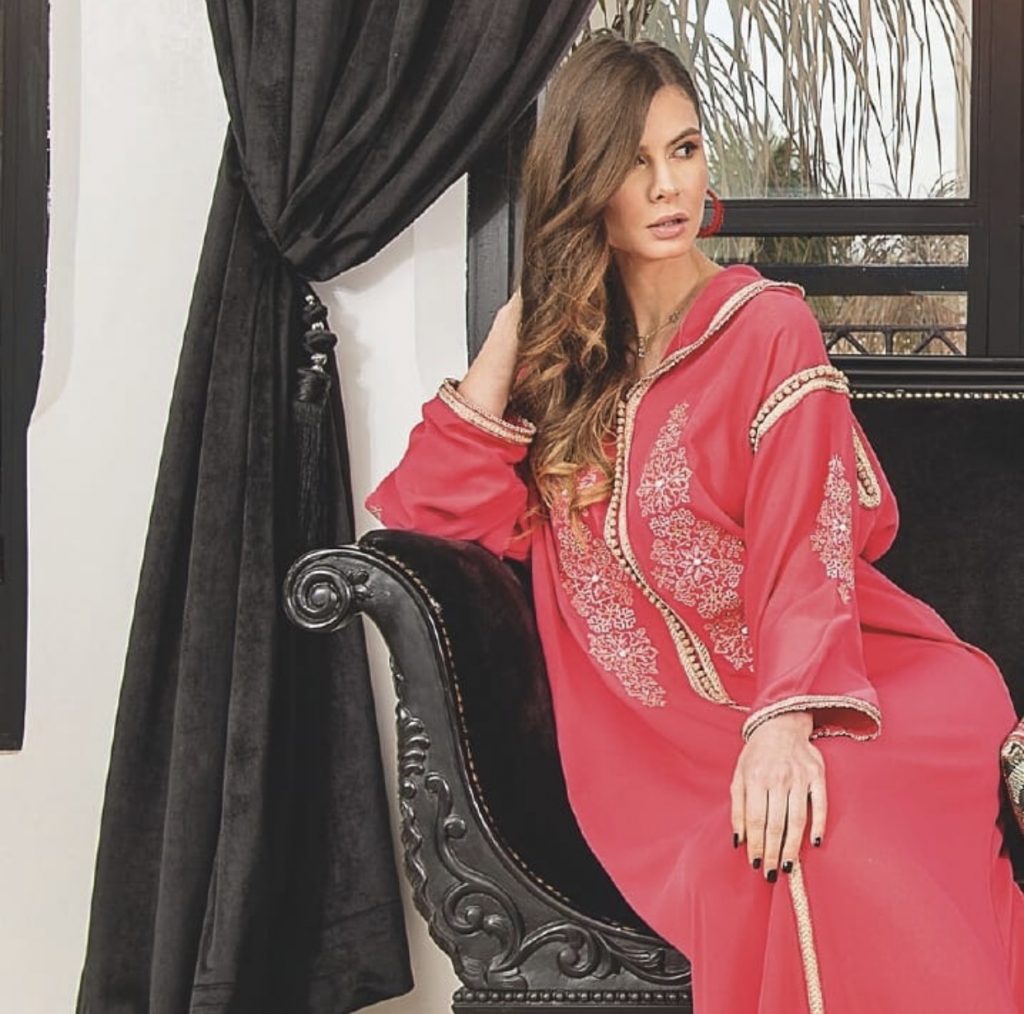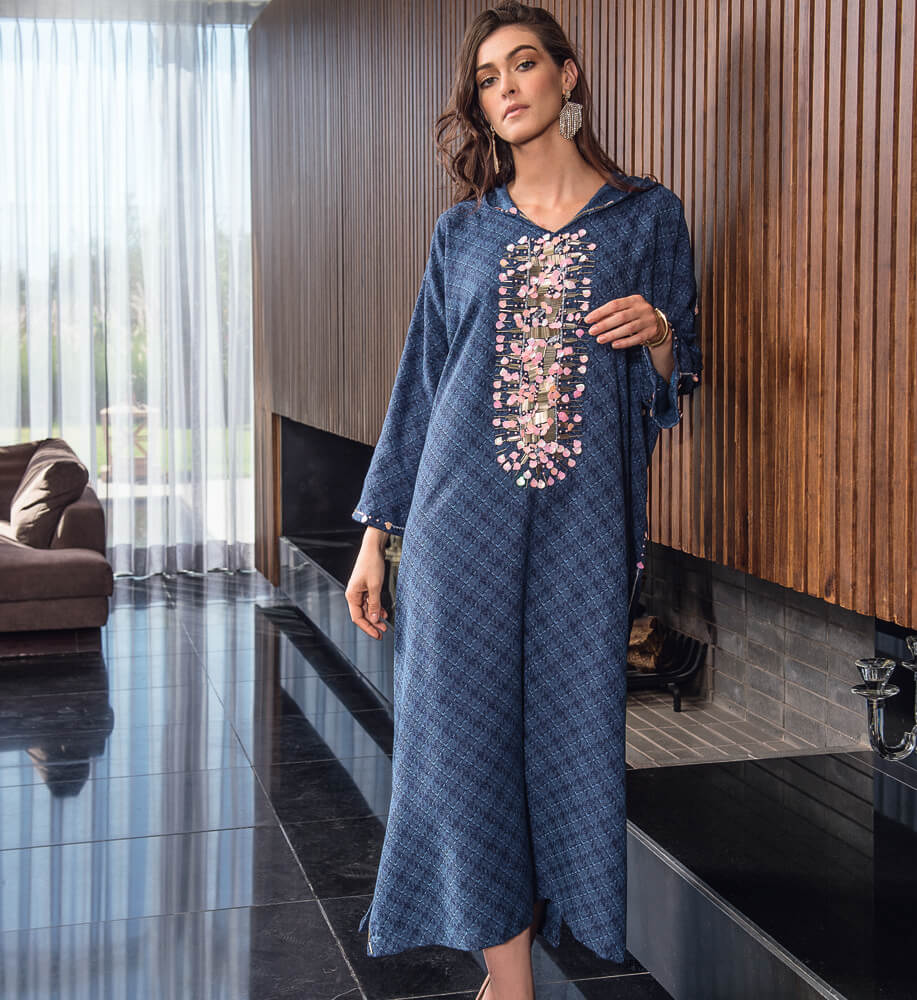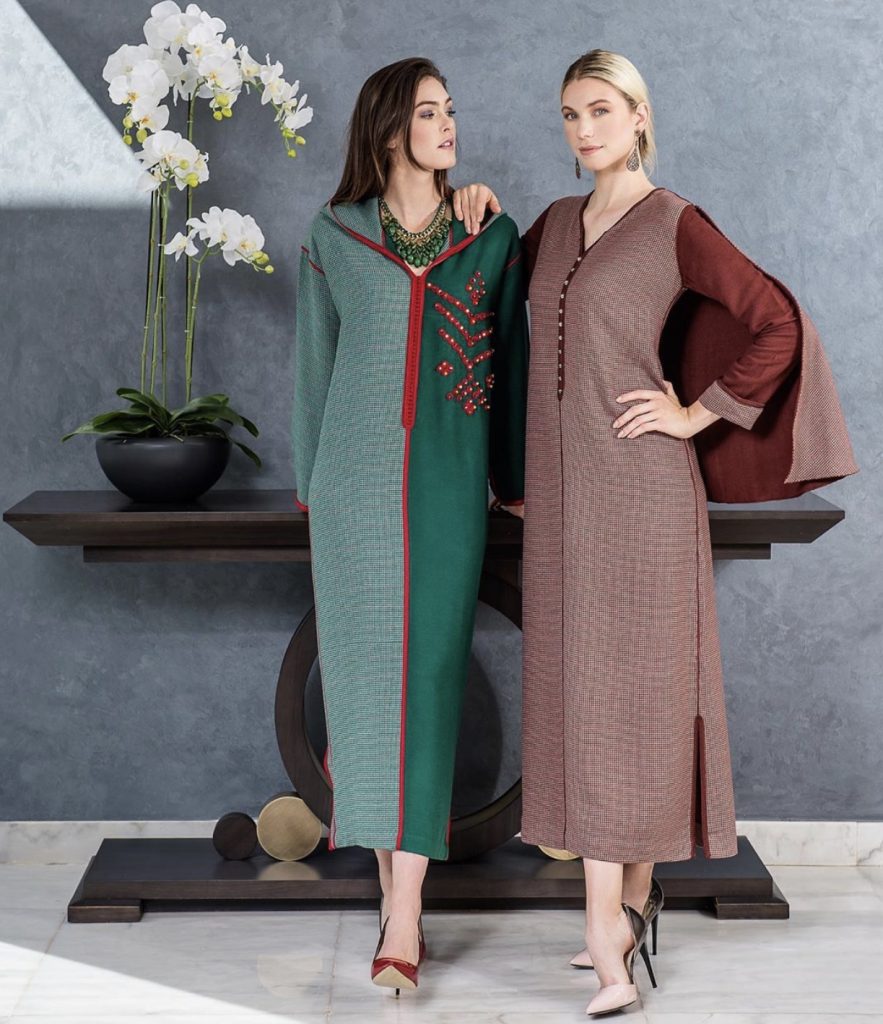Some links below may be affiliate links. As an Amazon Associate I earn from qualifying purchases.
Moroccan Djellaba is one of the most popular forms of traditional Moroccan clothing. It’s a long gown-like dress that comes in all kinds of textiles, adorned in beads, elaborate stitching, lace or mesh.
Unlike other traditional dresses such as Kaftan or Takchita, djellabas are distinguished by their large and loose hoods, a.k.a kobb.
The hood is pointy and might be used for protection against the sun or the desert winds. Although nowadays, the hood is mainly for decorative purposes and visual appeal.
It’s one of those ancient dress forms that managed to survive through a potent espousal with modern values.
Wherever you go in Morocco, you will be able to find people wearing Djellabas on top of their casual clothes, walking down the streets.
Djellabas fall into a standard unisex category, where you can see both men and women sporting this garment. While men’s Djellabas are fairly simple in matters of design and colors, women’s are much more complex and elaborate.
Much like any other piece of clothing, there are casual, everyday wear Djellabas as well as more expensive-looking/ formal Djellabas, specifically designed for special occasions.
In urban settings, women tend to wear these dresses on a day-to-day basis.
On the other hand, seeing men in Djellabas is slightly becoming a rare sighting. Men will mostly wear it to the mosque for prayer, during the holy month of Ramadan, or religious holidays like Eid.
Experience the Charm: Shop Moroccan Djellabas Online
The Origins of the Traditional Moroccan Djellaba
Like many various Moroccan traditions, Djellabas are deeply rooted in Berber culture and history. The traditional Moroccan djellaba was originally made of coarse wool and was meant to be worn exclusively by men.
The designs were much simpler back in the day, and the djellaba or tajellabiyt (in Amazigh) was based on a neutral scheme of colors, mostly whites with minimal stripes.
The Ait Khabbash djellaba, for instance, was woven from unprocessed sheep wool, while the woven patterns consisted of alternating white and brown checkered stripes.
In addition to the authentic Berber Djellaba, men also wore cloaks made of undyed wool, called asilham.
The color white was and still is, very prevalent in Moroccan culture. It signifies purity, virtue, good fortune, and honorable moral qualities.
This is why the earliest designs of the Djellabas, made by Berber women for Berber men, were all some variation of white or cream-colored
The Djellaba also acted as a public symbol of transition from boyhood to manhood. Amazigh women would present their male progeny with djellabas when they reached the age of thirteen or fourteen years old.
When the boys are ‘strong enough’, they’re allowed to wear their djellabas and start to accompany their fathers on their daily ventures, whether it’s going to the market or spending nights in the desert.
So it’s needless to say that the Moroccan Djellaba served as a symbol of virility and manliness that any young, coming-of-age, boy would wear with pride.
The Djellaba will play a major part in Moroccan women’s emancipation movement in the 1940s.
In fact, they will take what was supposed to be a ‘men’s attire only’ and start wearing it as one of their own.
This garment, as simple as it sounds, will be appropriated as a liberating symbol for women from the pre-implied gender roles dictated by the patriarchy.
And thus, the djellaba became a staple in every Moroccan woman’s wardrobe.
Innovative designs in Moroccan Djellaba
Moroccan Djellabas have since evolved from their early undyed coarsely woven wool.
Nowadays, there are djellabas made from all kinds of materials, whether it’s silk, cotton, linen, synthetic fabrics, or more.
These garments have massively progressed from a symbol of manhood to one of emancipation, to a religious-bound sign of modesty, to what we can only count now as a genre of avant-garde or exotic fashion.
There are winter options, spring options, summer as well as fall options in djellabas. Smart designs made from lightweight and breathable materials to best suit the hot weather.
And others made from wool and polar fleece to protect from the harshness of cold weather.
There are even errands-designated djellabas to slip on for a quick trip to the neighborhood grocery shop or to attend to a visit from the neighbors.
The choices are endless, especially with the rising number of aspiring Moroccan fashion designers and their ardent desire to revive this style of dress.
Many of whom have been successful in their attempts to modernize such modest and minimalistic garments.
With the use of extravagant embroidery, beaded pearls, sequins, sheer fabrics like organza and mesh, as well as tassels, the urbanized djellaba rises from the ashes of a passé trend to become a powerful force of contemporary Moroccan fashion.
You might notice how the design gets more complex with its delicate details and intricacies the more formal the djellaba gets.
So djellabas made to be worn for special occasions like engagement parties or religious holidays will have more embellishments.
It can be anything from stunning handmade stitching around the collar to imposingly ornamented pockets, or embroidered hoods with colorful beaded tassels.
Where to buy Moroccan Djellaba?
If you’re looking for an authentic traditional Moroccan Djellaba, you can find a large range of designs with all kinds of patterns, motifs, and colors in Souks. Though the ready-made ones that are largely sold in Moroccan medinas are very ‘commercial’.
If you want to wear it for a casual setting then it’s definitely suitable for that. But if you’re looking for something a bit more luxurious and personalized, we highly recommend that you check out the collection of Djellabas on Liliane.




